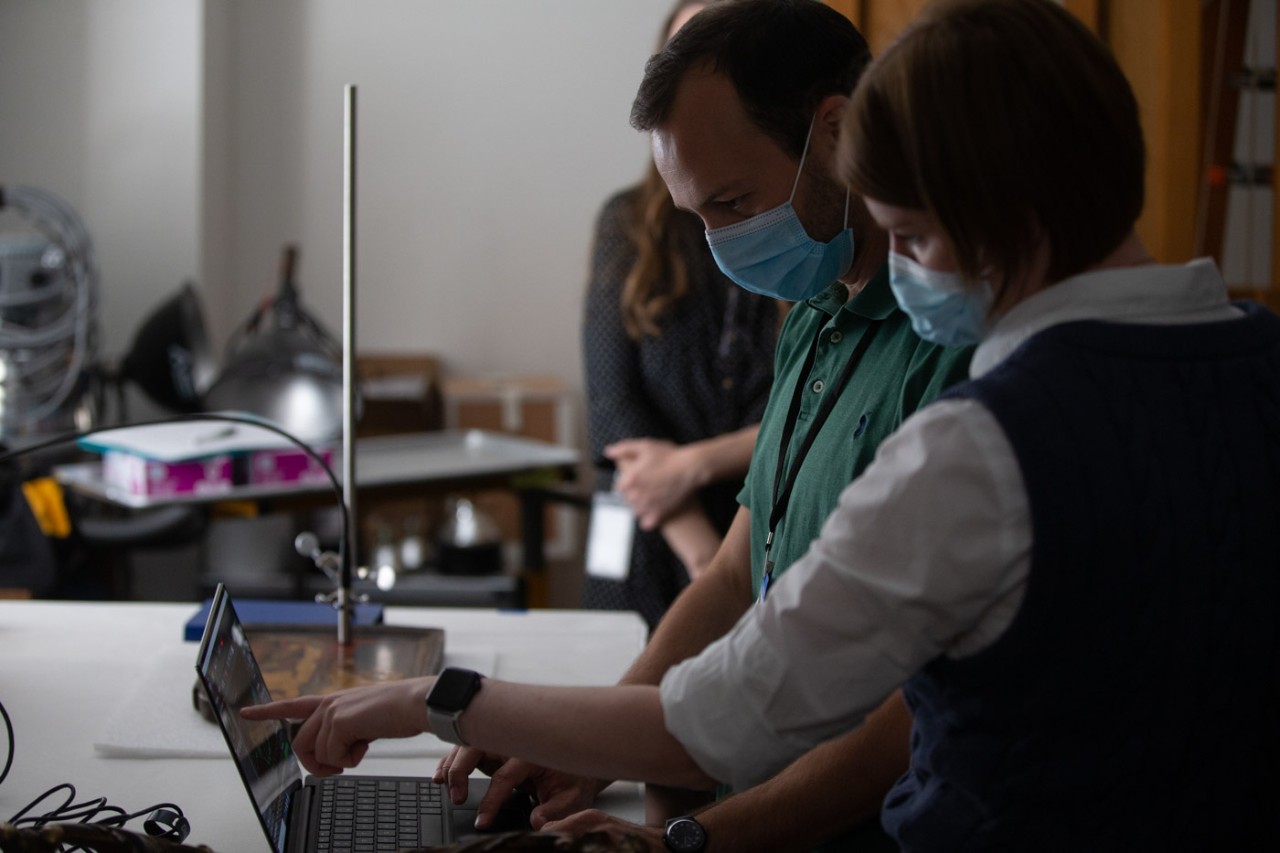The Cincinnati Art Museum turned to a scientist at the University of Cincinnati for help solving a mystery 1,300 years in the making.
Sung has seen many examples of ancient sculptures paying tribute to the dancing horses that performed for emperors as far back as 202 B.C. But no others have forehead tassels, she said. Was it perhaps added at some later date?
"I believed it was a mistake. The tassel wasn't in the right position," she said. "These pieces are so old. They often go through many repairs."
Donated to the Cincinnati museum by a collector in 1997, the dancing horse dates back to the Tang dynasty when such sculptures were commissioned for the express purpose of entombing them with royalty upon their deaths, Sung said.
Dancing horses were trained to move in time with a drumbeat. Sung said Emperor Xuanzong from the eighth century loved horses so much that he had a stable of more than 40,000. For one birthday celebration, he invited a troupe of 400 dancing horses to perform the "Song of the Upturned Cup."
"During the dramatic finale, one horse would bend its knees and clench a cup in its mouth and offer wine to the ruler to wish him longevity," Sung said. "This became a ritual."

UC assistant professor Pietro Strobbia consulted with the Cincinnati Art Museum to solve a mystery about one of its ancient Chinese masterpieces. Photo/Andrew Higley/UC Marketing + Brand
The museum's terracotta horse is saddled with a blanket and flowing silken material where stirrups often hang. Ten conical tassels adorn the horse in the same reddish color as its short-cropped tail and long mane.
"The making of the sculpture is beautiful. These horses are renowned," said Kelly Rectenwald, co-author of the paper and associate objects conservator at the Cincinnati Art Museum.
With a background in archaeology and chemistry, Rectenwald said she understands how the latest science techniques are helping to shed new light on antiquities.
"We don't have that kind of scientific equipment here, so partnering with UC has been a great resource," she said.
To answer some of the fundamental questions about the piece, the museum agreed to allow UC's Strobbia and collaborators such as Claudia Conti at Italy's Institute of Heritage Science to take 11 tiny samples for analysis.
"We judged the risk was worth the reward to answer the question," Rectenwald said.
Researchers deployed a battery of molecular, chemical and mineralogical tests of the masterpiece and its features using cutting-edge techniques such as X-ray powder diffraction, ionic chromatography and Raman spectroscopy.
Strobbia has always had an interest in art, surrounded by the work of Raphael, Michelangelo and Bernini in Italy.
"I think I grew up a little spoiled coming from Rome," he said.
He and his research partners found that, indeed, the sculpture's forehead tassel was made of plaster, not terra cotta. It was added to the sculpture using animal glue.






